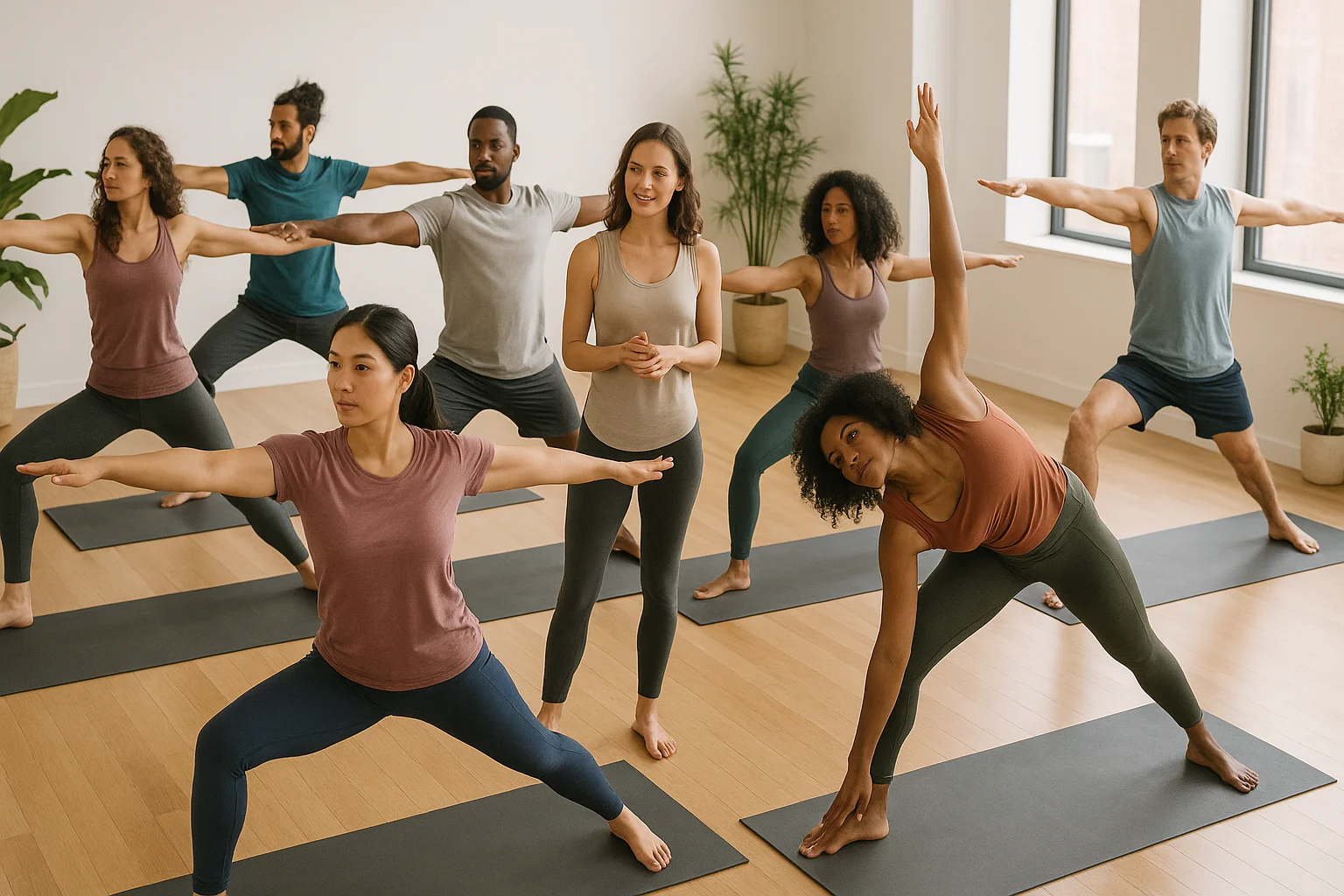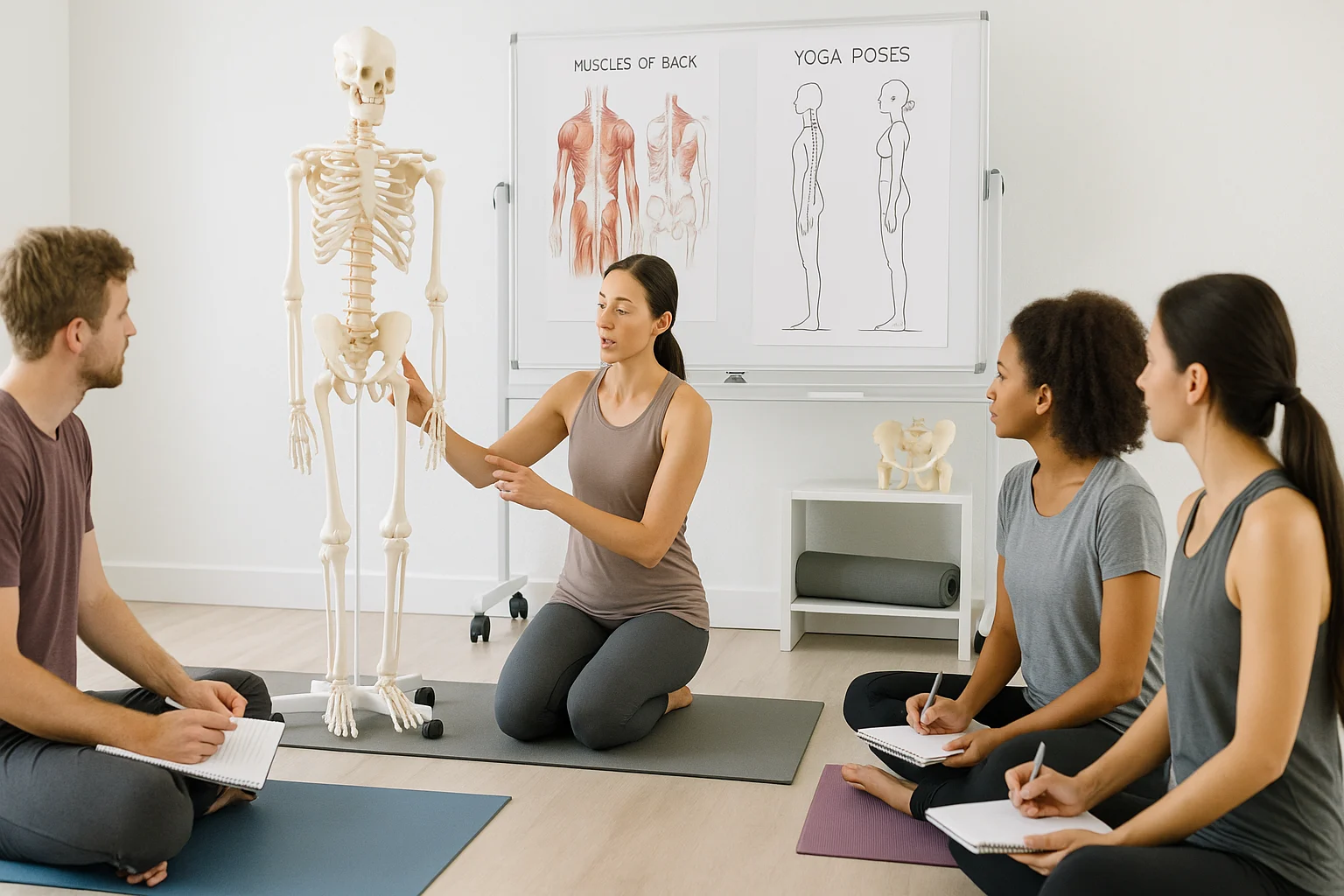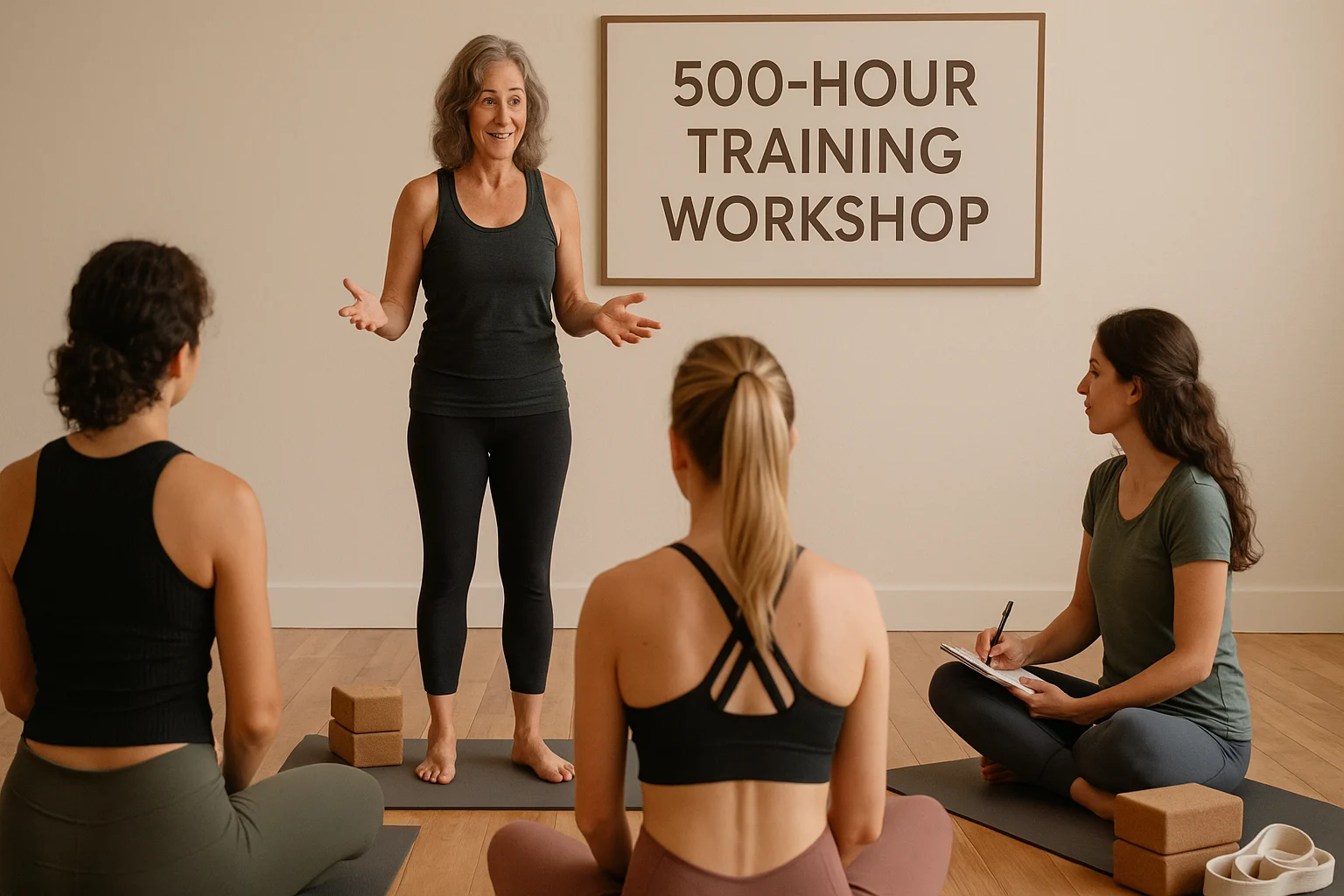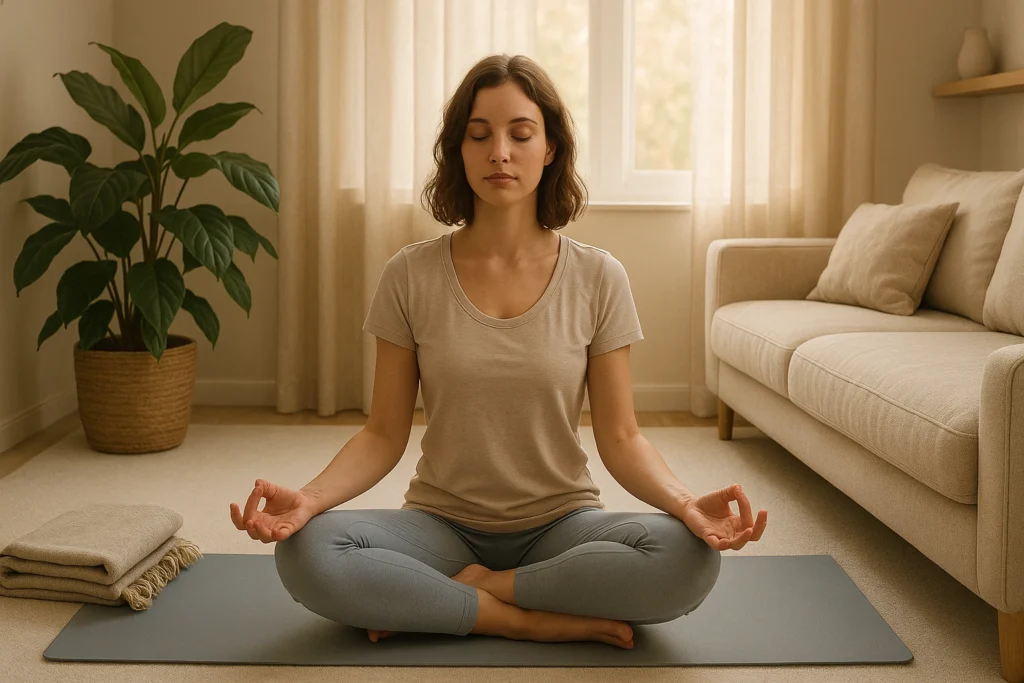
Thinking about yoga teacher training? I’ve been there, and this complete guide lays out the full yoga training syllabus, walking you through every part of the yoga certification journey. Whether you’re aiming for a 200-hour foundation, a 300-hour specialization, or the 500-hour mastery, knowing what’s ahead helps you make the right choice. From ancient teachings to today’s classroom skills, each level empowers you to share yoga’s joy with others — and earn a globally respected yoga certification. For a full overview of how to start teaching yoga and navigate your certification path, check out our yoga teacher training guide. Ready to see what it takes to become a confident teacher?
Discover Your YTT Path!Table of Contents
- The Foundation: 200-Hour Yoga Teacher Training Course Overview
- Deepening Your Practice: 300-Hour Yoga Certification Syllabus
- Mastery Level: 500-Hour Advanced Yoga Training
- Interactive Yoga Teacher Training Curriculum Preview
- What Every Yoga Certification Program Includes
- FAQ: Inside the Yoga Teacher Certification Syllabus
- Conclusion
Key Takeaways
- Well-Rounded Learning: Every yoga teacher training curriculum gives you a solid mix of philosophy, anatomy, poses, and teaching skills to make you a versatile yogi.
- Step-by-Step Growth: YTT programs grow with you—200-hour builds the basics, 300-hour lets you dive deeper, and 500-hour makes you a master.
- More Than Poses: You’ll learn yoga’s history, ethical guidelines, meditation, breathing techniques, and even how to run a yoga business.
- Real Teaching Practice: Practicum hours have you leading classes and getting feedback, building your confidence as a teacher.
- Finding Your Fit: Knowing the teacher training outline for each level helps you choose the program that’s perfect for your goals.
This post has affiliate links. We may earn a commission. Learn more.
The Foundation: 200-Hour Yoga Teacher Training Course Overview
The 200-hour yoga training syllabus starts you off with a solid base in yoga’s history, philosophy, and practice, setting you up to teach beginner-to-intermediate classes with confidence. I remember a friend from training sharing how this program gave her the tools to lead her first community class, mixing philosophy with hands-on skills. Here’s what you’ll jump into on this journey:
Yoga Philosophy & History
This part of the yoga course structure takes you back to yoga’s roots, showing it’s way more than stretching. You’ll read classics like Patanjali’s Yoga Sutras and the Bhagavad Gita, which spark ideas about mindfulness and freedom. You’ll also learn the Eight Limbs of Yoga, including:
- Yamas: Life rules like non-violence and honesty that keep you grounded.
- Niyamas: Personal habits like contentment to stay centered.
- Asana, pranayama, and meditation, guiding you toward enlightenment (samadhi).
Plus, you’ll check out yoga styles like Hatha and Vinyasa, each with its own flavor.
Anatomy & Physiology for Yoga
Next, anatomy is a must for teaching safely. You’ll learn how bones, muscles, and joints move in poses—knowing hip alignment saved my students from Warrior pose mishaps! You’ll also explore the subtle body, like chakras and nadis, and breath mechanics to boost your pranayama teaching.

Asana: Techniques and Practice
Here, you’ll get super comfy with poses, from standing ones to inversions, nailing alignment and tweaks. Learning what poses to avoid keeps things safe, and you’ll start designing balanced class flows that feel great.
Teaching Methodology & Sequencing
You’ll pick up teaching tricks like clear cuing and using your voice to keep classes flowing. Planning classes with warm-ups, peak poses, and Savasana was so fun for me. If hands-on assists are included, you’ll learn to guide students gently, making everyone feel welcome.
Practicum: Hands-On Teaching
The practicum is where you step up, teaching peers and soaking in feedback. You’ll also watch experienced teachers in action. A classmate told me, “Leading my first class was scary but totally life-changing!”
Business of Yoga & Ethics
Finally, you’ll cover professional ethics, your role as a teacher, and basic marketing. I found Yoga Alliance a great resource for certification standards and ethical guidelines.
Deepening Your Practice: 300-Hour Yoga Certification Syllabus
The 300-hour training dives deeper, helping you specialize in what you love, as outlined in this 300-hour training guide. It’s perfect for focusing on areas like trauma-informed yoga or advanced sequencing. Here’s what you’ll explore:
Advanced Asana & Sequencing
You’ll tackle fun, challenging poses like arm balances and smooth Vinyasa Krama transitions, making your classes vibrant and meaningful to keep your students hooked.
Deeper Philosophy & Meditation
You’ll explore deeper texts and meditation techniques, like mantra or mindfulness, to add a soulful spark to your teaching and really connect with your students.

Subtle Anatomy
You’ll also explore chakras, nadis, and koshas, seeing how they shape well-being. This gave my teaching a more holistic feel that my students really appreciated.
Therapeutics & Specialized Teaching
Here, you’ll learn to adapt yoga for injuries or groups like yoga for seniors with back pain. Advanced adjustments and props make your classes safe and healing.
Extended Practicum
The extended practicum lets you lead full classes with mentorship, helping you carve out your unique teaching style and voice.
Mastery Level: 500-Hour Advanced Yoga Training
The 500-hour yoga course structure is all about mastering your craft, blending 200 and 300-hour lessons or offered as one comprehensive program. It prepares you to lead and mentor others as a true yoga leader. Here’s what you’ll conquer:
Advanced Sequencing & Workshops
First, you’ll design sophisticated sequences and lead workshops or retreats, tailoring them to diverse groups with confidence.
Yoga Therapy
Next, you’ll use yoga therapeutically, creating tailored programs with case studies and collaborating with health pros, like for yoga and breathwork for stress relief.
Leadership & Community
You’ll also develop skills to lead trainings, mentor new teachers, and build inclusive yoga communities that make a real impact.
Independent Research
Finally, independent projects let you dive deep into a topic, adding to the yoga world and cementing your legacy as a teacher.

Interactive Yoga Teacher Training Curriculum Preview
Explore Your Yoga Certification Program
Select a level to preview a sample yoga training syllabus.
Warning: Select a Level
Please choose a certification level above to view the curriculum.
💡 Tip: Click a button to explore your YTT journey!
What Every Yoga Certification Program Includes
Regardless of level, every teacher training outline includes core elements. The table below shows how they progress:
| Component | 200-Hour Focus | 300-Hour Focus | 500-Hour Focus |
|---|---|---|---|
| Yoga Philosophy | Foundational texts, 8 Limbs, Yamas/Niyamas | Deeper dive into texts, modern applications | Comparative philosophy, leadership ethics |
| Anatomy & Physiology | Basic musculoskeletal, breath mechanics | Functional anatomy, subtle body | Biomechanics, therapeutic applications |
| Asana Techniques | Foundational poses, alignment | Advanced poses, Vinyasa Krama | Mastery of poses, creative sequencing |
| Teaching Methodology | Cuing, basic sequencing | Advanced adjustments, special populations | Mentoring, program development |
| Pranayama & Meditation | Basic breathing, intro to meditation | Advanced pranayama, mindfulness | Guiding deep meditation, energy work |
| Practicum | Practice teaching, peer feedback | Extended teaching, mentorship | Leading trainings, independent projects |
| Ethics & Business | Professional conduct, scope of practice | Niche marketing, community building | Business mastery, sustainable career |
FAQ: Inside the Yoga Teacher Certification Syllabus
Conclusion
Getting a grip on the yoga course structure sets you on an incredible path to teaching yoga. Each level’s teacher training outline builds your skills in philosophy, anatomy, and teaching, from the 200-hour basics to the 500-hour mastery. By diving into a yoga training course like this, you can choose a program that lights up your goals and lets you inspire others. Your yoga teaching adventure starts here—ready to jump in and become a yoga teacher?
Disclaimer: This content is for informational purposes only and does not constitute medical advice. Always consult a qualified health professional before starting a new exercise or wellness program.


